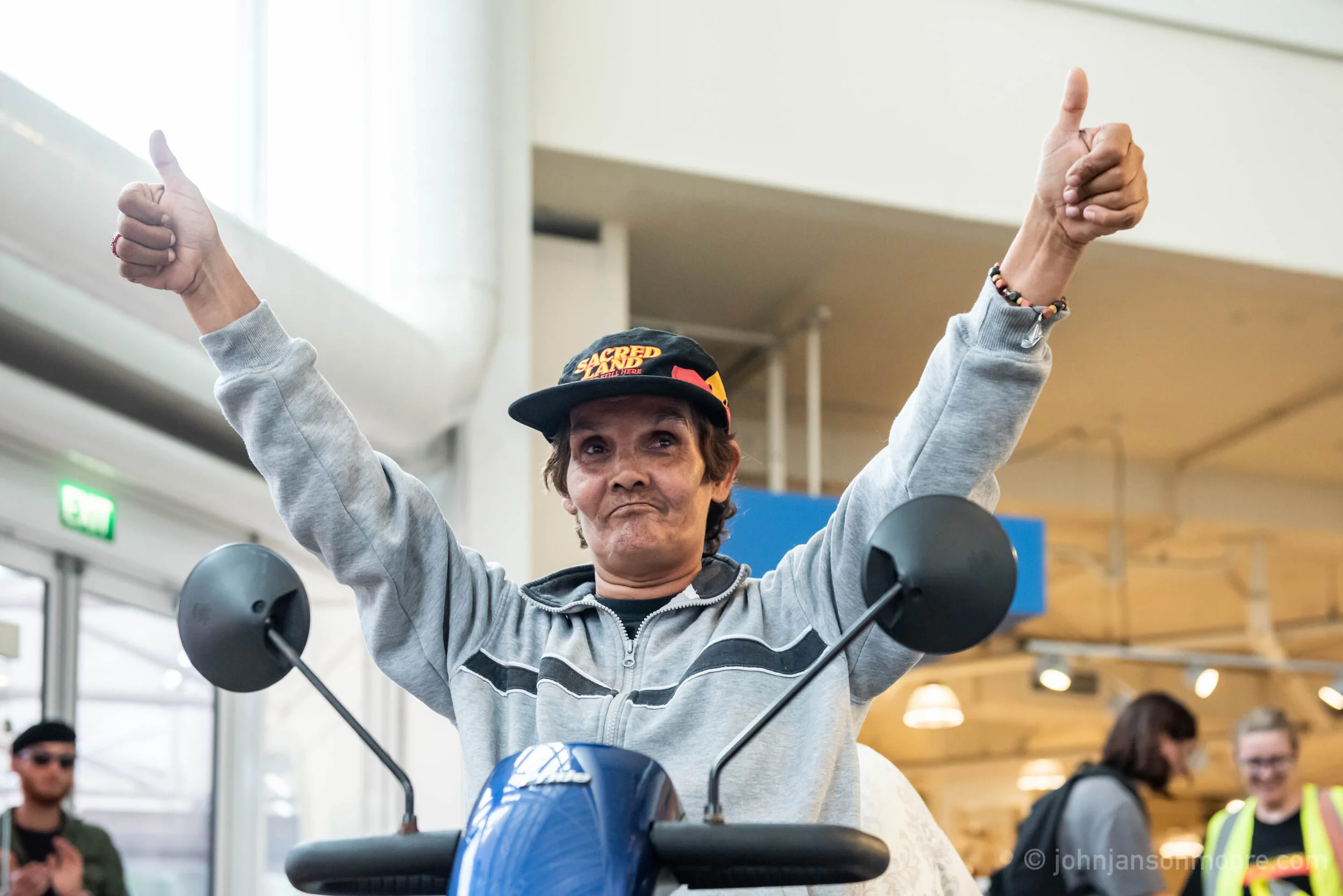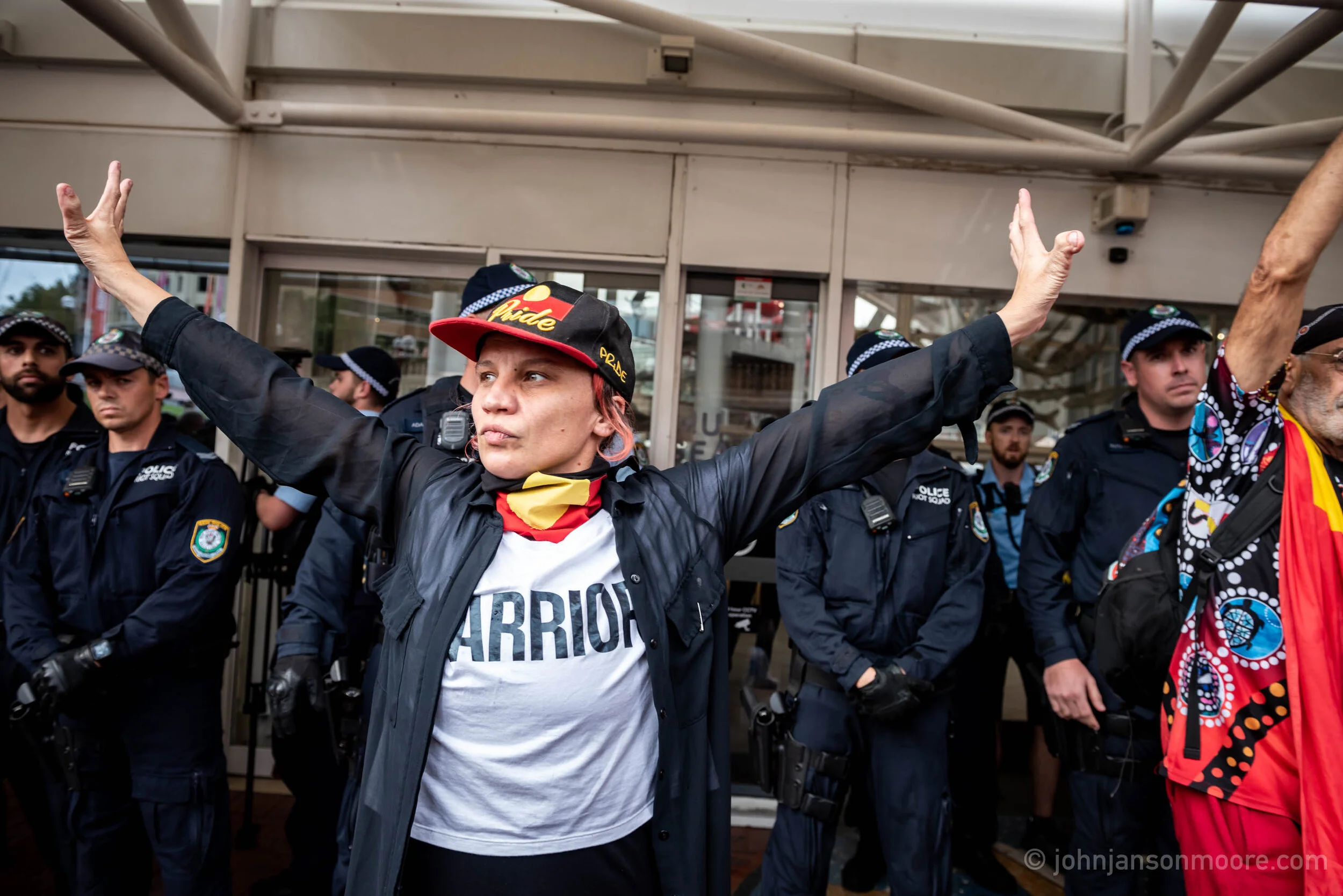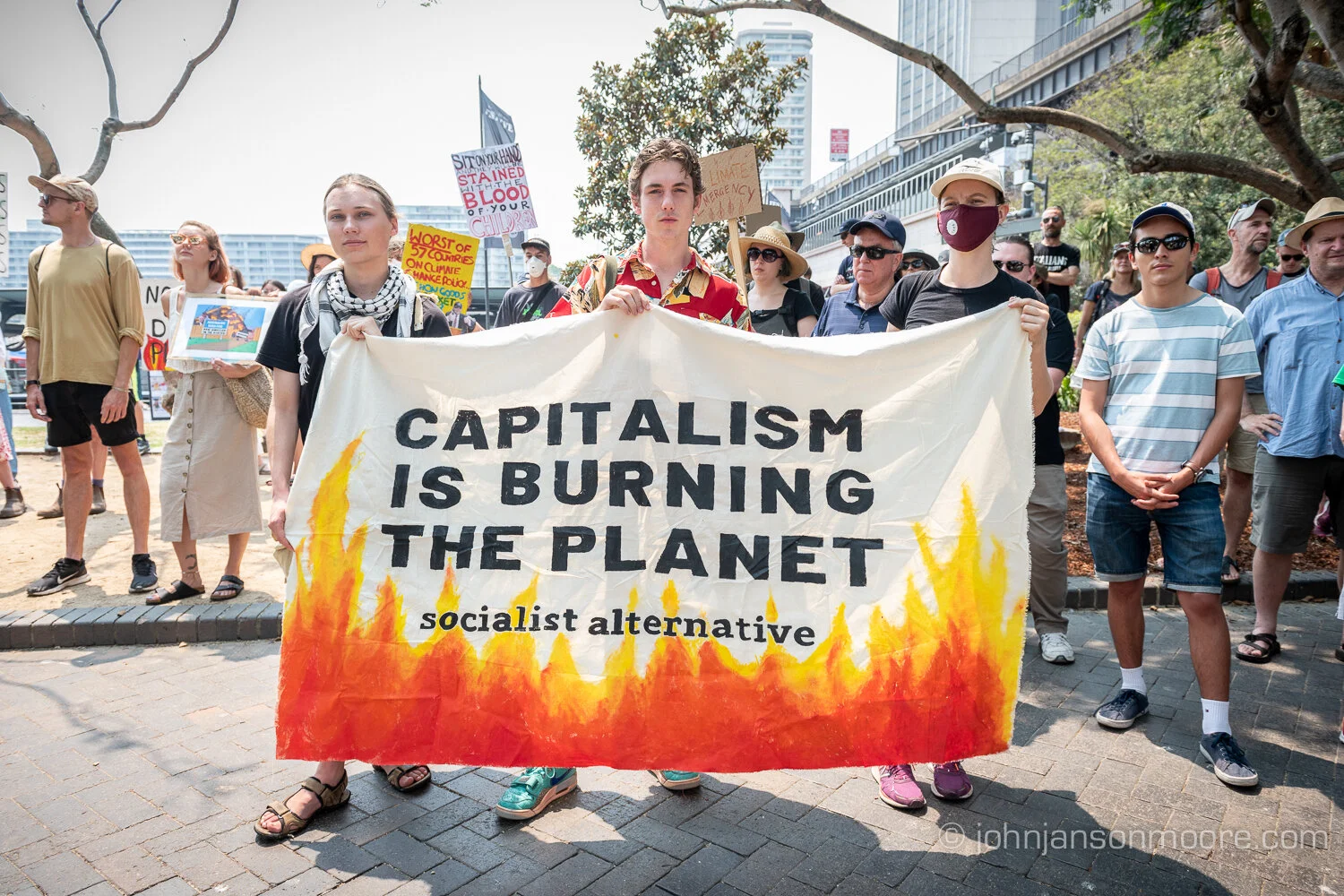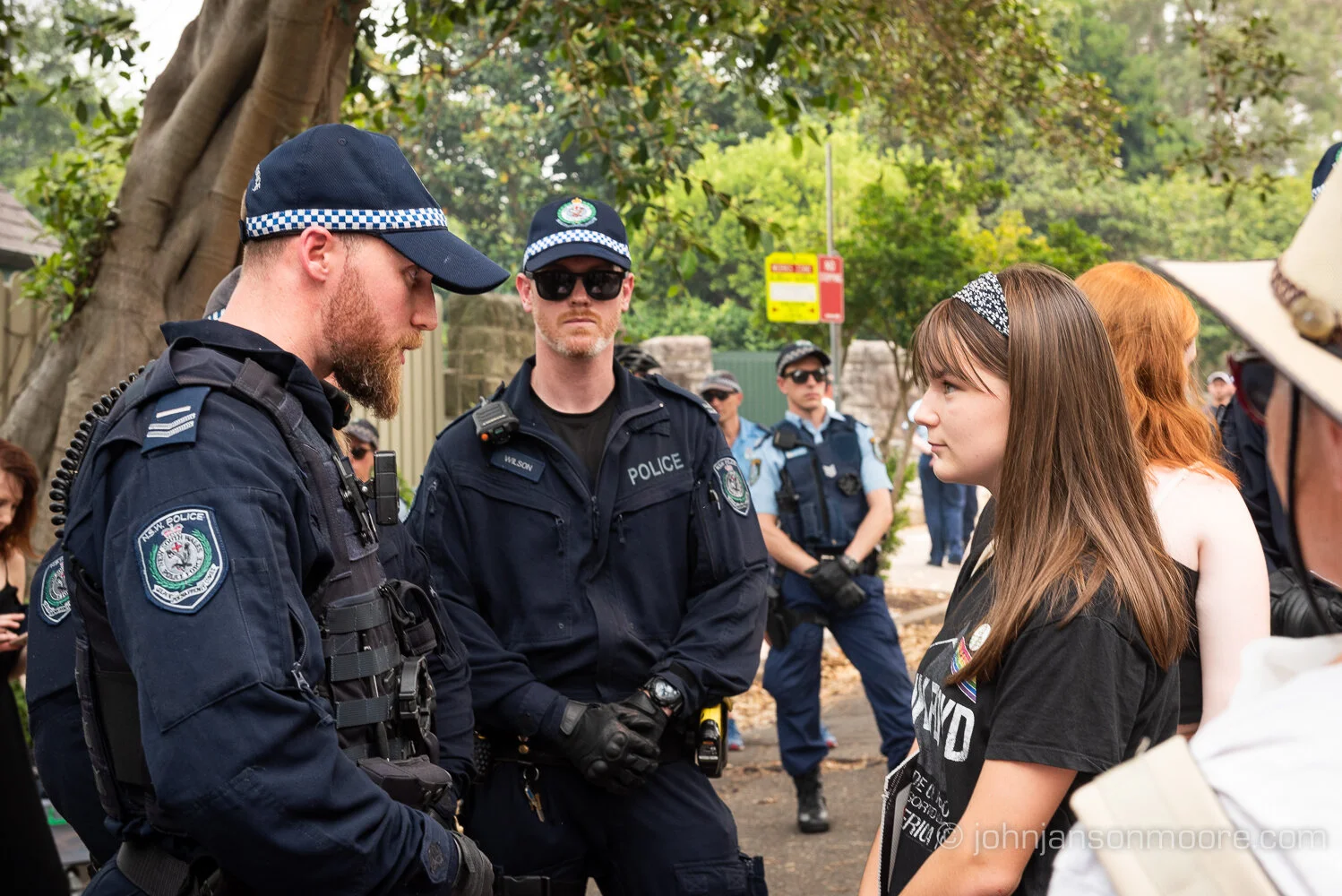Around 50 activists yesterday occupied the Australian National Maritime Museum at Darling Harbour in Sydney, Gadigal, to protest against the celebration of the 250th anniversary of Cook’s landing at Botany Bay where he and his party shot a Gweagle man, signalling the beginning of the attempted genocide of First Nations people across the continent of Australia.
The Museum is planning to sail a replica of Cook’s tall ship, the Endeavour, around Australia - a voyage that the original vessel never made. One of the speakers at yesterday’s occupation, Wiradjuri Elder, Aunty Jenny Munro, referred to this as “a pretend boat going on a pretend trip around a pretend country”.
After occupying the Museum for several hours, riot police moved in. The space was quickly evacuated and no arrests were made. Activists vow to disrupt the 250th anniversary celebrations that are scheduled across Australia from March to May this year.
*click through images for full screen view













































































































































































































































































































































































































































































































































































































































































































































































































































































































































































































































































































































































































